The AMD Ryzen 3 1300X and Ryzen 3 1200 CPU Review: Zen on a Budget
by Ian Cutress on July 27, 2017 9:30 AM EST- Posted in
- CPUs
- AMD
- Zen
- Ryzen
- Ryzen 3
- Ryzen 3 1300X
- Ryzen 3 1200
Civilization 6
First up in our CPU gaming tests is Civilization 6. Originally penned by Sid Meier and his team, the Civ series of turn-based strategy games are a cult classic, and many an excuse for an all-nighter trying to get Gandhi to declare war on you due to an integer overflow. Truth be told I never actually played the first version, but every edition from the second to the sixth, including the fourth as voiced by the late Leonard Nimoy, it a game that is easy to pick up, but hard to master.
Benchmarking Civilization has always been somewhat of an oxymoron – for a turn based strategy game, the frame rate is not necessarily the important thing here and even in the right mood, something as low as 5 frames per second can be enough. With Civilization 6 however, Firaxis went hardcore on visual fidelity, trying to pull you into the game. As a result, Civilization can taxing on graphics and CPUs as we crank up the details, especially in DirectX 12.
Perhaps a more poignant benchmark would be during the late game, when in the older versions of Civilization it could take 20 minutes to cycle around the AI players before the human regained control. The new version of Civilization has an integrated ‘AI Benchmark’, although it is not currently part of our benchmark portfolio yet, due to technical reasons which we are trying to solve. Instead, we run the graphics test, which provides an example of a mid-game setup at our settings.
At both 1920x1080 and 4K resolutions, we run the same settings. Civilization 6 has sliders for MSAA, Performance Impact and Memory Impact. The latter two refer to detail and texture size respectively, and are rated between 0 (lowest) to 5 (extreme). We run our Civ6 benchmark in position four for performance (ultra) and 0 on memory, with MSAA set to 2x.
For reviews where we include 8K and 16K benchmarks (Civ6 allows us to benchmark extreme resolutions on any monitor) on our GTX 1080, we run the 8K tests similar to the 4K tests, but the 16K tests are set to the lowest option for Performance.
For all our results, we show the average frame rate at 1080p first. Mouse over the other graphs underneath to see 99th percentile frame rates and 'Time Under' graphs, as well as results for other resolutions. All of our benchmark results can also be found in our benchmark engine, Bench.
MSI GTX 1080 Gaming 8G Performance

1080p

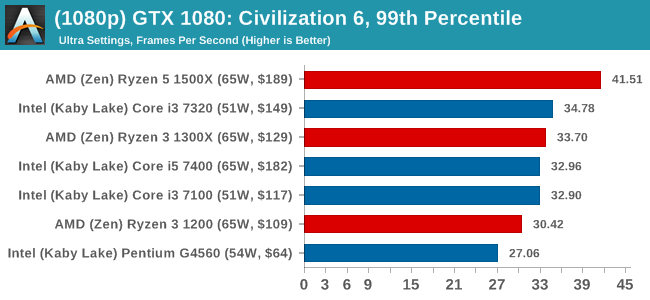
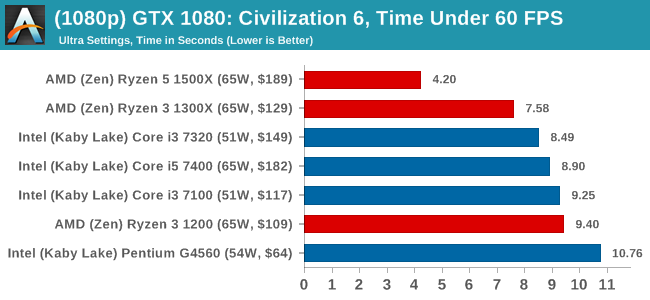
4K
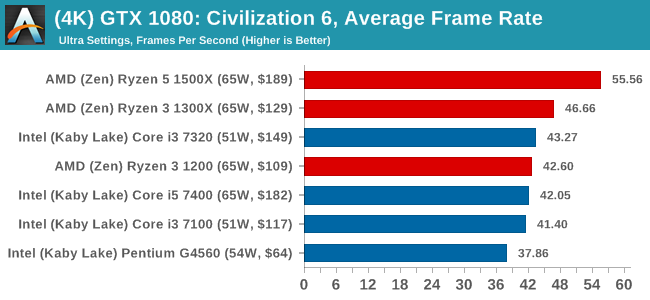
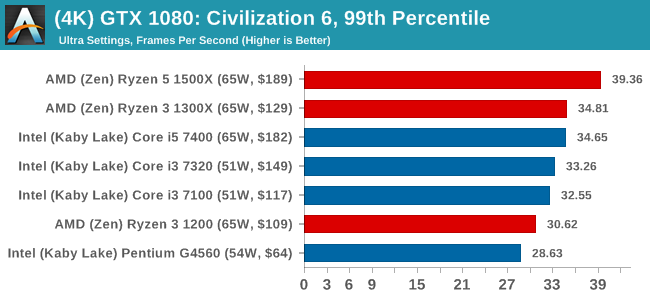
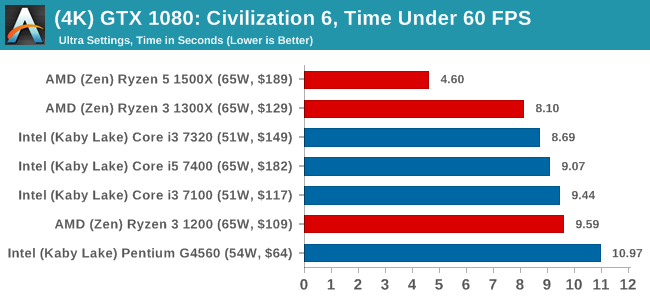
8K
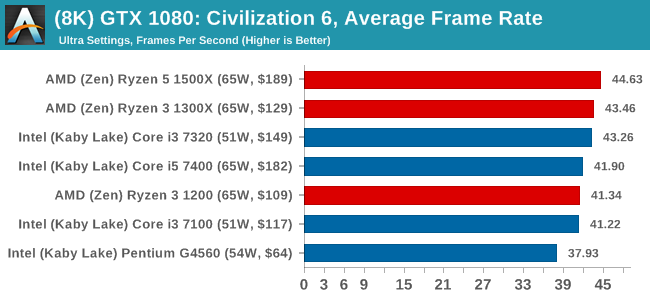
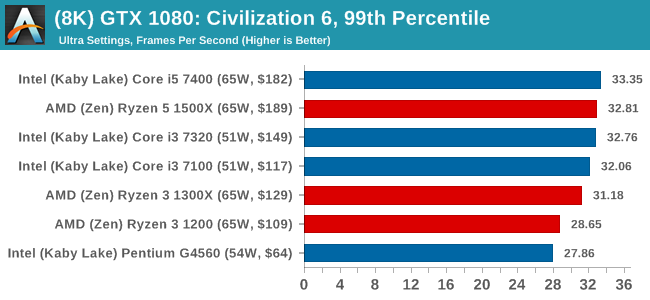

16K
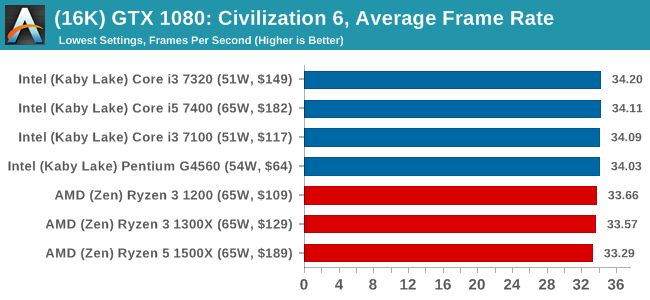
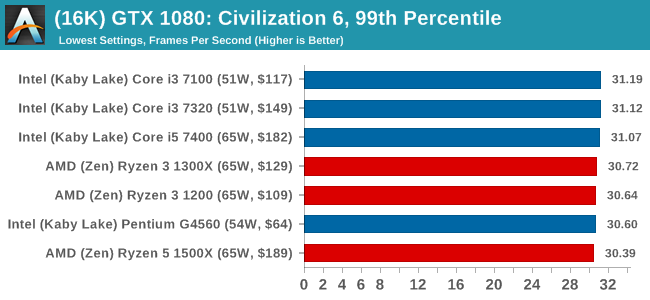
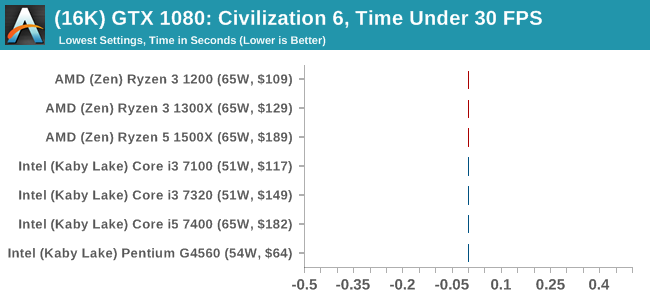
ASUS GTX 1060 Strix 6GB Performance
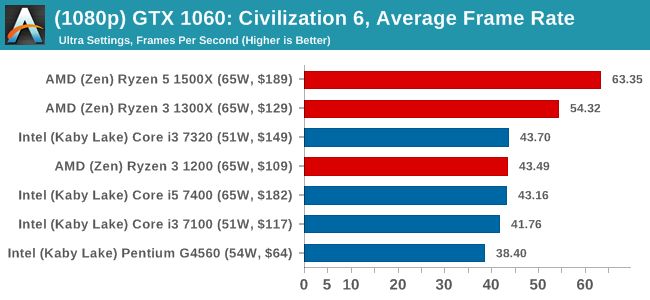
1080p

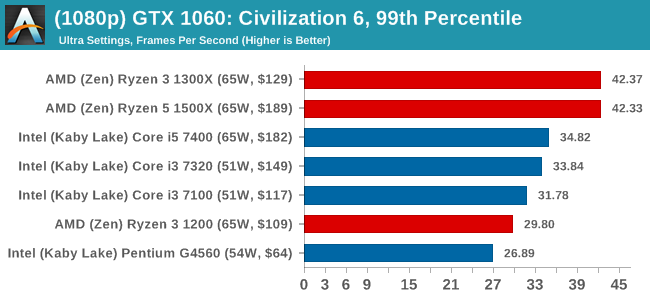
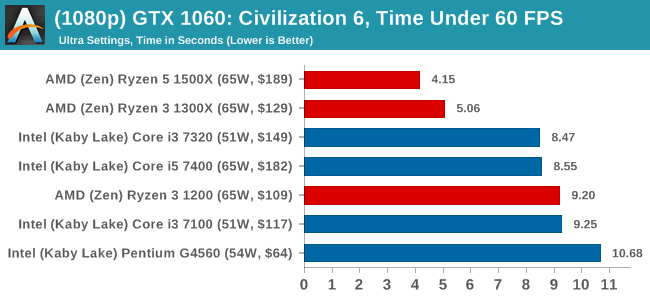
4K
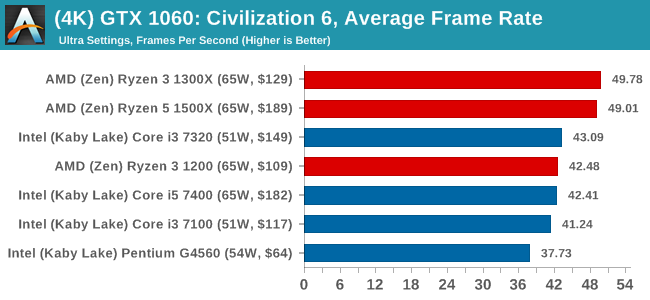


Sapphire R9 Fury 4GB Performance
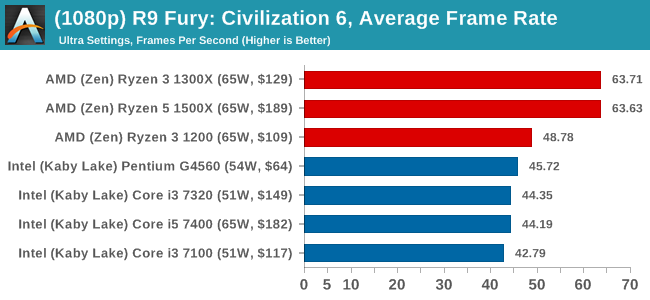
1080p

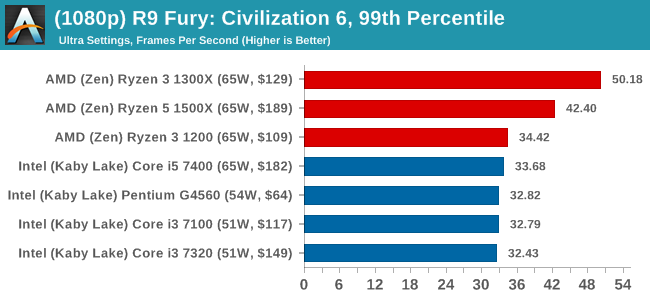

4K

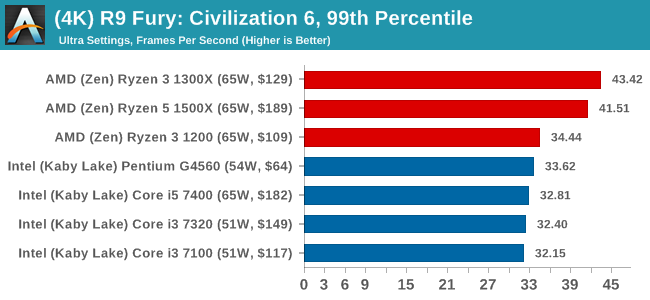
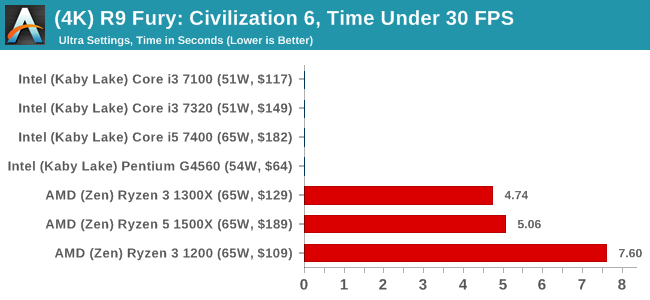
Sapphire RX 480 8GB Performance

1080p

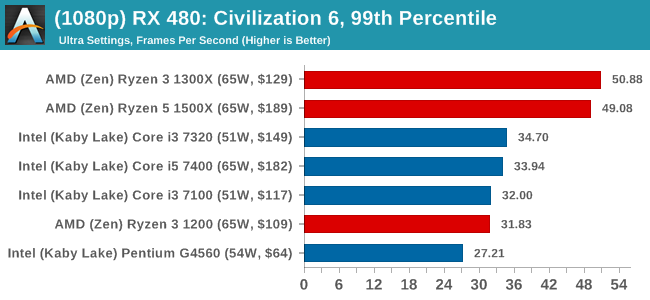
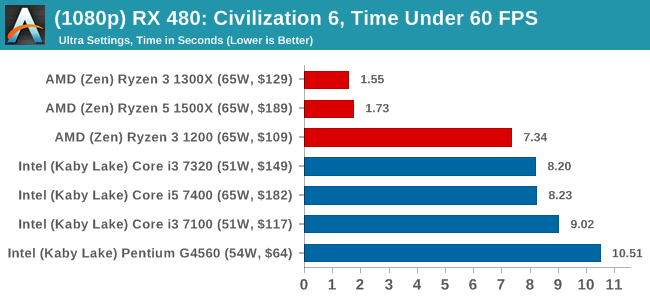
4K

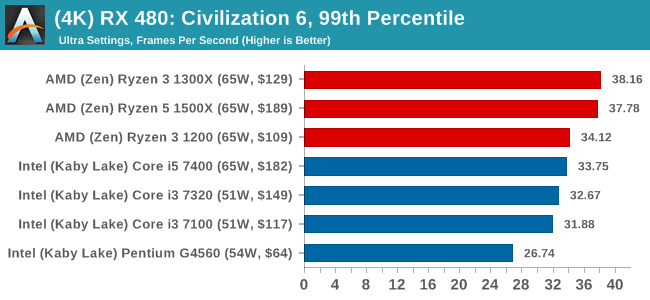
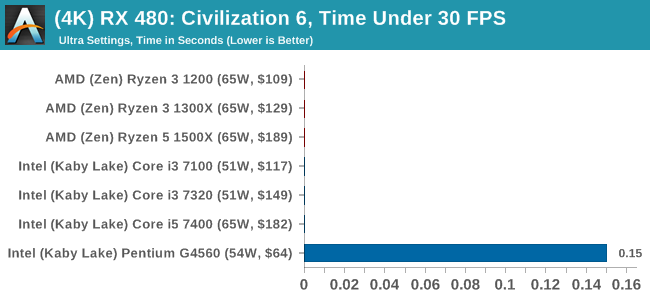



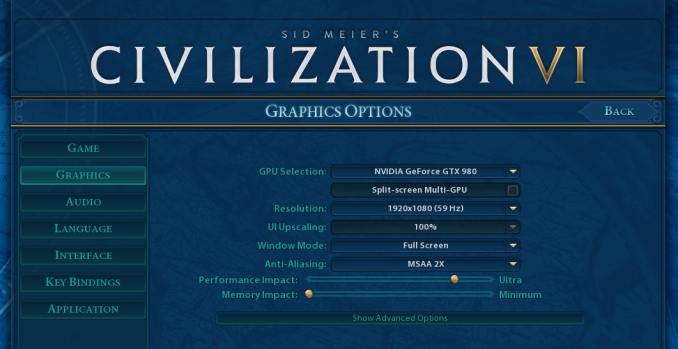








140 Comments
View All Comments
Ian Cutress - Thursday, July 27, 2017 - link
So one, overclocking is for a later review. Can't pass judgement on something that's not been tested. Other sites have certainly had more time (I get my chips 3-4 days after the US sites do, as I'm not in the US). This review was being written as the deadline passed, and is still being tested. It's not written it weeks in advance, with time to tooth comb and perfect every sentence. I've pulled an all-nighter to get to where it is now, even with some of the missing tests which are still being run. So when you say 'does not tell the full story', well not everything has been tested. I've made that abundantly clear several times in the review.Two, these chips are filling in volume at the lower end, especially in B2B where nothing is overclocked. You want me to sing the praises of a feature that we haven't had time to test for a product that's going to fill a market that won't use that feature, even though some in a different market might? If/when we get around to a pt2, I'll focus more on the enthusiast perspective. If you've read most of our CPU reviews over the past two years, most of the emphasis usually goes on out-of-the-box performance anyway.
Third, on the very first page, in black and white, it states 'The big upswing for AMD here is going to be overclocking, and potentially push the Ryzen 3 CPUs through to compete with the next one up the stack depending on stock performance.'
vanilla_gorilla - Thursday, July 27, 2017 - link
Ian, first off, great review as always and thank you. Second, you should just write up a large FAQ/disclaimer for your reviews that you can just link in the article and in comment replies. The same questions and complaints come up over and over, you've got to be tired of addressing them.DrKlahn - Thursday, July 27, 2017 - link
As I said, I understand it is for a later review. I also understand that a lot of these chips will never be overclocked. I don't want you to sing the praises of anything. I want a caveat in the conclusion that this potential exists and it impacts the value proposition. History has shown us (think the initial Radeon 290 reviews) that the first impression sticks with the reader regardless of how a product fares in the future. I have zero issues with your conclusion as an out of the box evaluation and appreciate your efforts. However your conclusion should have a caveat attached to it to call attention to everything the chip offers.mikato - Thursday, July 27, 2017 - link
I think that's fair. Here's another vote.Gothmoth - Thursday, July 27, 2017 - link
just saw your reply.... and i count on that. :-)Gothmoth - Thursday, July 27, 2017 - link
i hope anandtech will test the overcloked ryzen against the locked intels.but then... is amd paying enough fot advertising on anandtech..... :)
willis936 - Thursday, July 27, 2017 - link
There is an R7 review and now an R3 review but nothing on the most interesting segment: R5. I've seen multiple other sites say that the R5 segment is where AMD is the clear winner for all workloads. Go up or down $50 and Intel makes more sense for gaming.MrCommunistGen - Thursday, July 27, 2017 - link
http://www.anandtech.com/show/11244/the-amd-ryzen-...willis936 - Thursday, July 27, 2017 - link
I wonder why that doesn't show up when using anandtech's search feature.http://www.anandtech.com/SearchResults?q=R5
MrCommunistGen - Thursday, July 27, 2017 - link
This article doesn't show up when you search R3, and the 1800X article doesn't show up if you search R7.AMD isn't actually using R3, R5, and R7 as part of their branding for Ryzen, though I guess at least some are using that shorthand. The R3/5/7 are being used for GPU branding for some generations of discrete cards and APUs.
If you look at the top of the article underneath the author's name, you'll see what tags the article has (and thus search terms) that you could use to find it in the future. Looks like "Ryzen" or "Ryzen 3" "Ryzen 5" and "Ryzen 7" are good terms.
On the other hand, I found the link I posted above by going to Google and typing:
anandtech 1600x review